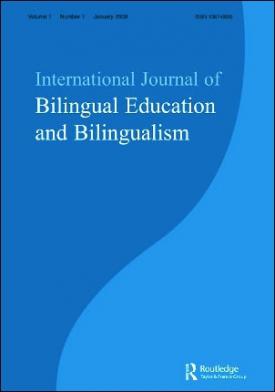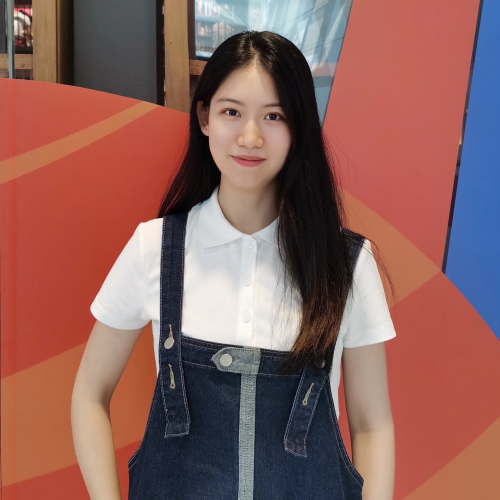【限时资源,期刊全文】International Journal of Bilingual Education and Bilingualism《国际双语教育和双语杂志》2019年论文集(侵删)
1759 阅读 26 下载 2020-06-24 18:14:00 上传 46.13 MB
本期推送的是SSCI收录的权威期刊——International Journal of Bilingual Education and Bilingualism《国际双语教育和双语杂志》2019年论文集,即第22卷共8期的78篇论文,其中目录可在正文中查看,全文可以点
International Journal of Bilingual Education and Bilingualism《国际双语教育和双语杂志》2019论文集-共8期78篇论文(侵删)
资料整理:张明辉(微信:zhangxiaojian160408)
(限时资源,即日起三天内下载有效,失效后请联系小编微信重新获取!)

| 卷号 | 期号 | 论文号 | 论文题目 |
| Vol. 22 | Issue 1 | Article 01 | Introduction: L1 use in content-based and CLIL settings |
| Vol. 22 | Issue 1 | Article 02 | Theories of trans/languaging and trans-semiotizing: implications for content-based education classrooms |
| Vol. 22 | Issue 1 | Article 03 | ‘Time for una pregunta’: understanding Spanish use and interlocutor response among young English learners in cross-age peer interactions while reading and discussing text |
| Vol. 22 | Issue 1 | Article 04 | Describing the use of the L1 in CLIL: an analysis of L1 communication strategies in classroom interaction |
| Vol. 22 | Issue 1 | Article 05 | Speaking educación in Spanish: linguistic and professional development in a bilingual teacher education program in the US-Mexico Borderlands |
| Vol. 22 | Issue 1 | Article 06 | The effect of first and second language use on question types in English medium instruction science classrooms in Hong Kong |
| Vol. 22 | Issue 1 | Article 07 | Curriculum genres and task structure as frameworks to analyse teachers’ use of L1 in CBI classrooms |
| Vol. 22 | Issue 2 | Article 08 | Language socialization and code-switching: a case study of a Korean–English bilingual child in a Korean transnational family |
| Vol. 22 | Issue 2 | Article 09 | Implementing English-medium instruction (EMI) in China: teachers’ practices and perceptions, and students’ learning motivation and needs* |
| Vol. 22 | Issue 2 | Article 10 | Principals as gatekeepers of language policy implementation in Kazan, Russia |
| Vol. 22 | Issue 2 | Article 11 | Translanguaging in Chinese foreign language classrooms: students and teachers’ attitudes and practices |
| Vol. 22 | Issue 2 | Article 12 | Translanguaging in mainstream education: a sociocultural approach |
| Vol. 22 | Issue 2 | Article 13 | Impact of early second-language acquisition on the development of first language and verbal short-term and working memory |
| Vol. 22 | Issue 2 | Article 14 | A Bourdieusian perspective on child agency in family language policy |
| Vol. 22 | Issue 2 | Article 15 | The effects of Spanish heritage language literacy on English reading for Spanish–English bilingual children in the US |
| Vol. 22 | Issue 2 | Article 16 | Simultaneous acquisition of English and Chinese impacts children’s reliance on vocabulary, morphological and phonological awareness for reading in English |
| Vol. 22 | Issue 2 | Article 17 | The bi-personal bilingual: a study of the perceived feeling of a changed self |
| Vol. 22 | Issue 2 | Article 18 | Exploring translanguaging in CLIL |
| Vol. 22 | Issue 2 | Article 19 | Effectiveness of policy development and implementation of L1-based multilingual education in Cambodia |
| Vol. 22 | Issue 3 | Article 20 | Controversies of bilingual education in China |
| Vol. 22 | Issue 3 | Article 21 | Niche market and individual practices in Tibetan language education in China: an ethnography of language policy |
| Vol. 22 | Issue 3 | Article 22 | Tibetan bilingual education in Qinghai: government policy vs family language practice |
| Vol. 22 | Issue 3 | Article 23 | Questioning and responding in the classroom: a cross-disciplinary study of the effects of instructional mediums in academic subjects at a Chinese university |
| Vol. 22 | Issue 3 | Article 24 | Translanguaging in a Chinese–English bilingual education programme: a university-classroom ethnography |
| Vol. 22 | Issue 3 | Article 25 | Individual agency in language acquisition planning for multi-dialectism: A Shanghai story |
| Vol. 22 | Issue 3 | Article 26 | Protecting language or promoting dis-citizenship? A poststructural policy analysis of the Shanghainese Heritage Project |
| Vol. 22 | Issue 3 | Article 27 | Concluding commentary: the discursive space for bilingual education programs in China |
| Vol. 22 | Issue 4 | Article 28 | A longitudinal study on the gradual cognate facilitation effect in bilingual children’s Frisian receptive vocabulary |
| Vol. 22 | Issue 4 | Article 29 | Examining the functions of L1 use through teacher and student interactions in an adult migrant English classroom |
| Vol. 22 | Issue 4 | Article 30 | Educators’ beliefs about appropriate pedagogical models for Spanish-speaking ELLs who differ in home-language and English-language literacy abilities in the United States |
| Vol. 22 | Issue 4 | Article 31 | The role of mindfulness in reducing English language anxiety among Thai college students |
| Vol. 22 | Issue 4 | Article 32 | The integration of content and language in students’ task answer production in the bilingual classroom |
| Vol. 22 | Issue 4 | Article 33 | Heteroglossic practices in a multilingual science classroom |
| Vol. 22 | Issue 4 | Article 34 | Bilingualizing linguistically homogeneous classrooms in Kenya: implications on policy, second language learning, and literacy |
| Vol. 22 | Issue 4 | Article 35 | Modelling vocabulary development among multilingual children prior to and following the transition to school entry |
| Vol. 22 | Issue 4 | Article 36 | Expression and perception of emotions by Polish–English bilinguals I love you vs. Kocham Cię |
| Vol. 22 | Issue 4 | Article 37 | Verbal and visuospatial working memory in immersion-educated bilingual children |
| Vol. 22 | Issue 4 | Article 38 | Speaking an Aboriginal language and school outcomes for Canadian First Nations children living off reserve |
| Vol. 22 | Issue 4 | Article 39 | Cross-linguistic Influence in Bilingualism: in honor of Aafke Hulk |
| Vol. 22 | Issue 5 | Article 40 | Language learning motivation and projected desire: an interview study with parents of young language learners |
| Vol. 22 | Issue 5 | Article 41 | Is early immersion effective for Aboriginal language acquisition? A case study from an Anishinaabemowin kindergarten |
| Vol. 22 | Issue 5 | Article 42 | Reaching out to migrant and refugee communities to support home language maintenance |
| Vol. 22 | Issue 5 | Article 43 | Bilingual cogito: inner speech in acculturated bilinguals |
| Vol. 22 | Issue 5 | Article 44 | Teacher agency within the Finnish CLIL context: tensions and resources |
| Vol. 22 | Issue 5 | Article 45 | Impact of task modality on collaborative dialogue among plurilingual learners: a classroom-based study |
| Vol. 22 | Issue 5 | Article 46 | Reflections on Turnbull’s reframing of foreign language education: bilingual epistemologies |
| Vol. 22 | Issue 5 | Article 47 | The translanguaging classroom: leveraging student bilingualism for learning |
| Vol. 22 | Issue 5 | Article 48 | Language, identity and migration: voices from transnational speakers and communities |
| Vol. 22 | Issue 5 | Article 49 | Pains and gains of ethnic multilingual learners in China: an ethnographic case study |
| Vol. 22 | Issue 5 | Article 50 | Linguistic diversity and social justice: an introduction of applied sociolinguistics |
| Vol. 22 | Issue 5 | Article 51 | Assessing English language learners: theory and practice |
| Vol. 22 | Issue 5 | Article 52 | Neuroscience and multilingualism |
| Vol. 22 | Issue 5 | Article 53 | Complexity in classroom foreign language learning motivation: a practitioner perspective from Japan |
| Vol. 22 | Issue 6 | Article 54 | Analysing students’ content-learning in science in CLIL vs. non-CLIL programmes: empirical evidence from Spain |
| Vol. 22 | Issue 6 | Article 55 | Awareness of language: literacy and second language learning of Spanish in Mexico |
| Vol. 22 | Issue 6 | Article 56 | The impact of oral English proficiency on humanitarian migrants’ experiences of settling in Australia |
| Vol. 22 | Issue 6 | Article 57 | Anxiety, language use and linguistic competence in an immigrant context: a vicious circle? |
| Vol. 22 | Issue 6 | Article 58 | Average change in sentence repetition by Spanish-English speaking children: kindergarten to first grade |
| Vol. 22 | Issue 6 | Article 59 | Language transmission opportunities created through video recording in the family: a microanalysis |
| Vol. 22 | Issue 6 | Article 60 | Language attitudes towards Spanish and Catalan in autochthonous and immigrant families in Catalonia: analysing the correlation between student attitudes and their parents |
| Vol. 22 | Issue 6 | Article 61 | Reported parent-teacher dialogues on child language learning: voicing agency in interview narratives |
| Vol. 22 | Issue 7 | Article 62 | Code-switching and its role in language socialization |
| Vol. 22 | Issue 7 | Article 63 | The role of working and short-term memory in predicting receptive vocabulary in monolingual and sequential bilingual children |
| Vol. 22 | Issue 7 | Article 64 | Development of the beliefs and language awareness of content subject teachers in CLIL: does professional development help? |
| Vol. 22 | Issue 7 | Article 65 | Access to English in Pakistan: inculcating prestige and leadership through instruction in elite schools |
| Vol. 22 | Issue 7 | Article 66 | The relationship between multilingual raters’ language background and their perceptions of accentedness and comprehensibility of second language speech |
| Vol. 22 | Issue 7 | Article 67 | Bilingual profiles and third language learning: the effects of the manner of learning, sequence of bilingual acquisition, and language use practices |
| Vol. 22 | Issue 7 | Article 68 | Feature variability in the bilingual-monolingual continuum: clitics in bilingual Quechua-Spanish, bilingual Shipibo-Spanish and in monolingual Limeño Spanish contact varieties |
| Vol. 22 | Issue 7 | Article 69 | WHODUNNIT? Language interaction in identification of sentential subjects in Wales and Patagonia |
| Vol. 22 | Issue 8 | Article 70 | Differences in use without deficiencies in competence: passives in the Turkish and German of Turkish heritage speakers in Germany |
| Vol. 22 | Issue 8 | Article 71 | Expansive learning in teachers’ professional development: a case study of intercultural and bilingual preschools in Chile |
| Vol. 22 | Issue 8 | Article 72 | Cross-linguistic awareness-raising practices can enhance written performance in EFL classes in Japanese universities |
| Vol. 22 | Issue 8 | Article 73 | The more similar the better? Factors in learning cognates, false cognates and non-cognate words |
| Vol. 22 | Issue 8 | Article 74 | Lexical sophistication across languages: a preliminary study of undergraduate writing in Arabic (L1) and English (L2) |
| Vol. 22 | Issue 8 | Article 75 | Role of decoding competence in the Chinese reading comprehension development of ethnic minority students in Hong Kong |
| Vol. 22 | Issue 8 | Article 76 | Understanding Chinese language teachers’ language ideologies in teaching South Asian students in Hong Kong |
| Vol. 22 | Issue 8 | Article 77 | Translanguaging in higher education: beyond monolingual ideologies |
| Vol. 22 | Issue 8 | Article 78 | The multilingual city: vitality, conflict and change |
所需积分:0 分
限期开放已结束
表情
图片
附件















